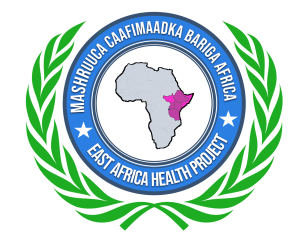
CARDIOVASCULAR DISEASE
Cardiovascular disease (CVD) refers to a wide variety of heart and blood vessel diseases and conditions, including coronary heart disease, stroke, high blood pressure, high blood cholesterol, and rheumatic heart disease. Heart disease is the first and stroke is the third leading cause of death in the State.
For the general population, the mortality rates in Minnesota are generally lower than in the nation as a whole; however, for the American Indian population in Minnesota the death rates from 1990 through 1998 were 33% higher than the State population and 44% higher than the total U.S. American Indian population. Age adjusted death rates also indicate considerable disparities in heart disease for African American females living in Minnesota. Asians living in Minnesota are more likely than other population groups to suffer from stroke.
CONTRIBUTING FACTORS
Atherosclerosis, the underlying disease process of the major forms of CVD, is a slowly progressive condition that begins in childhood. It is associated with several modifiable risk factors including: high blood pressure, cigarette smoking, physical inactivity, diabetes, obesity, and poor diet. Control of modifiable risk factors at the population and individual level is key to prevention of CVD and its complications. Coronary heart disease is rarely found in populations without elevated cholesterol. Stroke is most strongly associated with high blood pressure.
CVD incidence and mortality rates are higher among people of lower socioeconomic status.
The greatest declines in CVD mortality over time have been among those at the highest income and educational levels. These differences have been attributed to the greater prevalence of risk factors (obesity, lack of exercise, high blood pressure, smoking) within lower SES populations and, also, to the effects of neighborhood socioeconomic status. For instance, nationwide, the percentage of students watching more than 2 hours of television per school day is: Whites – 34%, Hispanics – 52%, African Americans – 74%.
CURRENT MDH ACTIVITIES
The Department recently received a three-year grant from the Centers for Disease Control to develop a comprehensive state plan to promote cardiovascular health. The Department will seek close collaboration, with those population groups most at risk of premature death and disability due to CVD, to identify an overall strategy and effective, readily disseminated local interventions that will reduce risk factors for CVD.
The Department has participated in the development of several widely recognized, skills-based school health curriculums for promoting a healthier diet and increased physical activity among children. The Department of Health also staffs the Minnesota Council on Physical Activity and Sports and the Minnesota 5-a-Day Coalition. These coalitions each have broad participation from the public and private sector (70+ member organizations each) to support physical activity and fruit and vegetable consumption statewide.
COMMUNITY STRATEGIES
The type of projects that would be implemented with this funding will build on successful models that have been developed in several southern states such as the Bootheel project in Missouri. The Bootheel project, a community-based cardiovascular risk-reduction program, demonstrated in a six county area that with even modest resources, community-based interventions could reduce self-reported risk for cardiovascular disease within a relatively brief period. The Bootheel project included such activities as exercise groups, healthy cooking demonstrations, blood pressure and cholesterol screenings, and cardiovascular disease education.
EXAMPLES OF COMMUNITY INTERVENTIONS INCLUDE:
- expanding the amount and availability of green space (i.e., parks and trails)
making neighborhoods more walkable and bicycle-friendly (improved safety, new or better lit sidewalks) - supporting a farmers’ market
- conducting low-fat milk campaigns or 5-A-Day campaigns for fruits and vegetables
- media campaigns tailored to racial and ethnic and American Indian populations
- blood pressure screening and control campaigns
- cholesterol screening and control campaigns
ANTICIPATED OUTCOMES
Programs such as these will lead to increased physical activity, better diet, and less obesity. Short-term benefits include increased productivity and a reduction in the need for medical interventions, such as treatment for high blood pressure or high cholesterol.
African-American and Hispanic populations in Minnesota are much less likely to have had their blood pressure checked in the last six months compared to Whites. Communities implementing hypertension screening programs could eliminate this disparity in screening rates in their communities.
Over time, these changes will lead to a reduction in cardiovascular disease and related diseases and reduced incidence of premature death and disability.